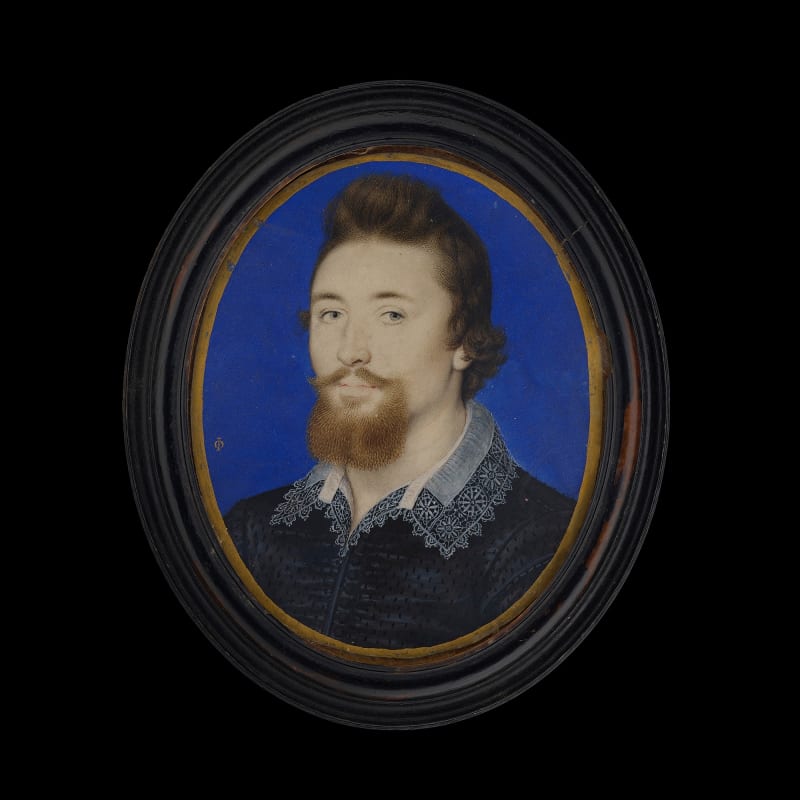Mostly renowned for his red-chalk drawings, Charles Beale the Younger has also been studied as ‘a good copyst in miniature’.[1] He learned to draw and paint by practising in his mother’s studio from a young age and took lessons with the miniaturist Thomas Flatman (1637–1688), a highly cultivated and eclectic man and one of the earliest and closest friends of the Beales. Flatman shared with Beale a preference for naturalistic likenesses and the idea of painting ‘out of love and friendship or for study and improvement’.[2] This miniature reveals Flatman’s influence in the distinctive treatment of the eyes and lips and in his use of brown-reddish tones.[3]
The Beales counted Edward Stillingfleet – ‘the leading theologian and apologist of the Church of England’ – as a family friend.[4] They first met him in the early 1660s, when he was a lecturer at the Rolls Chapel on Chancery Lane. In his Liber Dolorosus, Samuel Woodford reported attending his sermons and dining...
Mostly renowned for his red-chalk drawings, Charles Beale the Younger has also been studied as ‘a good copyst in miniature’.[1] He learned to draw and paint by practising in his mother’s studio from a young age and took lessons with the miniaturist Thomas Flatman (1637–1688), a highly cultivated and eclectic man and one of the earliest and closest friends of the Beales. Flatman shared with Beale a preference for naturalistic likenesses and the idea of painting ‘out of love and friendship or for study and improvement’.[2] This miniature reveals Flatman’s influence in the distinctive treatment of the eyes and lips and in his use of brown-reddish tones.[3]
The Beales counted Edward Stillingfleet – ‘the leading theologian and apologist of the Church of England’ – as a family friend.[4] They first met him in the early 1660s, when he was a lecturer at the Rolls Chapel on Chancery Lane. In his Liber Dolorosus, Samuel Woodford reported attending his sermons and dining with him at Hind Court in October and November 1664. Stillingfleet’s first sitting with Mary Beale followed in early December 1664.[5]
By the mid- to late 1660s, when he was Rector of St Andrew’s in Holborn and Prebend at St Paul’s, Stillingfleet had become a famous figure. His good looks and lively preaching of the gospels attracted crowds to his pulpit and ‘melted’ ladies’ hearts.[6] Such popularity created something of a demand for his likeness. Mary Beale painted Stillingfleet on numerous occasions over their thirty years of friendship and at least two sittings are recorded in her husband’s notebooks.[7] She also commissioned a now lost portrait of him by Sir Peter Lely around 1674, which is recorded in an engraving by Abraham Blooteling.[8] Sometime after taking delivery of the portrait, Charles made a precise study of the likeness in chalks that is now in the British Museum collection, and it is presumably around this time that the present miniature was painted.[9]
[1] Long 1924, pp.20–21
[2] Draper 2020, p.98.
[3] Sotheby’s, London, ‘British and Continental Portrait Miniatures’, 18 December 1986, p.6; Long 1924, p.155.
[4] Till 2004.
[5] Woodford, Liber Dolorosus, Bodleian Library, MS. Eng. Misc. 381.
[6] Memoir of Lady Warwick (1847), quoted in Till 2004.
[7] Known portraits of Stillingfleet by Mary Beale are: a portrait made in December 1664 (recorded in Samuel Woodford’s diary); a copy for Col. Giles Strangway in 1672 (recorded in Charles Beale’s 1672 notebook); an oval (83.2 x 73 cm) as Dean of St Paul’s, c. 1672–74; three half-lengths as Dean of St Paul in 1681 (recorded in Charles Beale’s 1681 notebook); an oval as Bishop of Worcester in 1689; and possibly another portrait (76 x 63 cm) dated c.1665–70, sold at Christie’s, London, 25 March 1966, from the collection of H.D.D. Streatfield, recorded by Ingamells (1981, p. 366). Mary Beale also painted Stillingfleet’s wife in 1677 and his son in 1681 (both recorded in Charles Beale’s notebooks).
[8] George Vertue, G. Vertue’s Note Book A.x., British Museum, London, Add. MS. 23,072; Vertue Note Books, p. 172. Blooteling (after Sir Peter Lely) Edward Stillingfleet, c. 1672, National Portrait Gallery, NPG D19104.
[9] Charles Beale, Portrait of Edward Stillingfleet, Bishop of Worcester, c.1679–81, British Museum, London, Gg,5.98.










